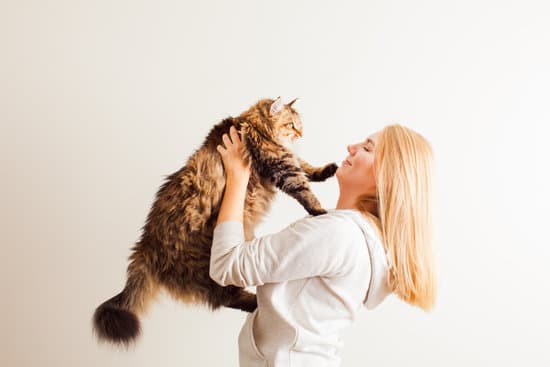A Guide to Brushing, Bathing, and Trimming Claws
Cats are known for their fastidious grooming habits. They spend a significant portion of their day cleaning themselves, and as a result, their fur is often soft and shiny. However, there are times when kittens need a little extra help with their grooming rituals. This is where brushing, bathing, and trimming claws come into play.
Brushing is an essential part of a cat’s grooming routine. It helps to remove loose fur, dirt, and debris from their coat, preventing matting and tangles. Regular brushing can also help to reduce hairballs, which can be a common problem for kittens. Bathing, on the other hand, is less frequent and typically only necessary if a cat gets particularly dirty or has a skin condition that requires treatment. Finally, trimming a kitten’s claws is important for their health and safety, as overgrown claws can cause discomfort and even injury.
Overall, understanding the importance of these grooming rituals can help kitten owners keep their feline friends healthy and happy. By regularly brushing, bathing, and trimming their claws, cats can maintain their natural beauty and avoid potential health issues.
The Importance of Grooming for Cats

Grooming is a crucial aspect of a cat’s daily routine. Regular grooming helps to keep a kitten’s coat healthy, clean, and shiny. It also helps to prevent hairballs, skin irritations, and other health issues.
Grooming can also be an effective way to bond with your cat. By grooming your kitten regularly, you can establish a sense of trust and affection with your furry friend.
Here are some of the key benefits of grooming your kitten:
1. Maintains Skin and Coat Health
Regular grooming helps to keep your kitten’s skin healthy and free from irritations. Brushing removes loose hair, dirt, and debris from your kitten’s coat, which can prevent matting and tangling. This can also reduce the risk of skin infections and other health issues.
2. Reduces Hairballs
Cats are known for their grooming habits, but they can also swallow a lot of hair in the process. This can lead to hairballs, which can cause digestive issues and discomfort. Regular grooming can help to reduce the amount of hair that your kitten ingests, which can prevent hairballs.
3. Prevents Parasites
Grooming can also help to prevent parasites such as fleas and ticks. By regularly inspecting your kitten’s coat and skin, you can identify any signs of infestation early and take action to prevent it from spreading.
4. Enhances Bonding
Grooming can be a great way to bond with your kitten. By grooming your kitten regularly, you can establish a sense of trust and affection with your furry friend. This can also help to reduce stress and anxiety in your cat.
In conclusion, grooming is an essential aspect of your kittens daily routine. It helps to keep your cat healthy, happy, and comfortable. By establishing a regular grooming routine, you can enhance your bond with your kitten and ensure that they look and feel their best.
Understanding Cat Fur and Skin

Cats are known for their soft and fluffy fur, which is not only aesthetically pleasing but also serves various functions. The fur helps to regulate body temperature, protect the skin from harmful UV rays, and provide sensory information. Understanding the anatomy of kitten fur and skin is crucial for proper grooming and care.
The kitten’s skin is made up of three layers: the epidermis, dermis, and subcutaneous tissue. The epidermis is the outermost layer and is responsible for producing the fur. The dermis is the middle layer that contains blood vessels, nerves, and hair follicles. The subcutaneous tissue is the innermost layer and contains fat cells that help to insulate the body.
Cat fur comes in various lengths, textures, and colors. The length of the fur is determined by the hair growth cycle, which consists of three phases: anagen, catagen, and telogen. The anagen phase is the active growth phase, the catagen phase is the transitional phase, and the telogen phase is the resting phase.
Regular brushing is essential for maintaining a healthy coat and preventing matting and tangling. It also helps to distribute natural oils throughout the fur, which keeps it shiny and healthy. Bathing should be done only when necessary, as it can strip the fur of its natural oils and cause dryness and irritation. When trimming claws, it is important to avoid cutting the quick, which is the pink part of the claw that contains blood vessels and nerves.
Understanding cat fur and skin is crucial for proper grooming and care. By providing proper care, cat owners can ensure that their furry friends stay healthy and happy.
Essential Grooming Tools
Grooming your kitten is an essential part of keeping them healthy and happy. There are several tools that every cat owner should have on hand to make the grooming process as easy and stress-free as possible.
Brushing Tools
A good quality brush is essential for keeping your kitten’s coat healthy and shiny. A slicker brush is great for removing loose hair and preventing matting, while a bristle brush is ideal for smoothing the coat and distributing natural oils. A comb with both wide and narrow teeth is also useful for detangling and removing any remaining loose hair.
Bathing Tools
While cats are known for being clean animals, sometimes a bath is necessary. A gentle cat-specific shampoo is essential, as human shampoos can be too harsh and cause skin irritation. A non-slip mat for the bottom of the tub or sink is also important, as it will help your kitten feel more secure during the bathing process.
Claw Trimming Tools
Trimming your cat’s claws is important for preventing them from becoming too long and causing discomfort or damage. A good quality pair of kitten nail clippers is essential, as well as a styptic powder to stop any bleeding if you accidentally cut the quick. It’s important to have a steady hand and to be careful not to cut too much off the nail.
Overall, having the right grooming tools on hand can make the grooming process much easier and more enjoyable for both you and your kitten.
Brushing Techniques for Different Coat Types

Short-Haired Cats
Short-haired kittens are low-maintenance when it comes to grooming. However, regular brushing helps remove loose hair and prevents hairballs. A slicker brush or rubber brush can be used to groom short-haired kittens. Brushing should be done in the direction of hair growth to prevent discomfort to the kitten.
In addition to brushing, short-haired kittens can benefit from wiping with a damp cloth or a grooming wipe to remove dirt and dander. This can also help distribute natural oils throughout the coat, keeping it shiny and healthy.
Long-Haired Cats
Long-haired kittens require more maintenance when it comes to grooming. Regular brushing is essential to prevent matting and tangling of the fur. A metal comb and a slicker brush are recommended for grooming long-haired kittens.
Brushing should be done in sections, starting from the base of the hair and working towards the tips. This helps to prevent pulling and discomfort to the kitten. Pay attention to areas prone to matting, such as the belly, armpits, and behind the ears.
In addition to brushing, long-haired cats may require trimming of the fur around the anus to prevent fecal matter from getting stuck in the fur. This can be done with scissors or clippers, but it is recommended to seek professional help for this task.
Overall, regular grooming is important for the health and well-being of kittens. By using the appropriate tools and techniques, cat owners can ensure that their furry friends are comfortable and happy.
Bathing Your Cat: When and How

Preparing for a Bath
Bathing a kitten can be a daunting task, but with the right preparation, it can be a smooth process. Before bathing your kitten, make sure you have all the necessary supplies, including a cat-friendly shampoo, towels, and a non-slip mat. It’s also important to trim your cat’s nails beforehand to prevent scratches.
Next, fill the tub or sink with warm water that is comfortable to the touch. Avoid using hot water as it can scald your kitten’s skin. Place a non-slip mat at the bottom of the tub or sink to prevent your cat from slipping and sliding. Finally, make sure to close the bathroom door and any windows to prevent your kitten from escaping.
The Bathing Process
Once you have prepared everything, it’s time to give your cat a bath. Begin by wetting your cat’s fur with warm water, starting at the neck and working your way down. Be gentle and avoid getting water in your cat’s ears and eyes. Apply a small amount of kitten shampoo, lather it up, and massage it into your kitten’s fur. Rinse thoroughly with warm water, making sure to remove all the shampoo.
After washing, wrap your cat in a towel and gently pat dry. Avoid rubbing your cat’s fur as it can cause tangles and mats. Once your cat is dry, you can use a comb or brush to remove any remaining tangles.
After the Bath
After the bath, it’s important to provide your cat with a warm, quiet place to dry off. You can use a hairdryer on a low setting to speed up the drying process, but make sure to keep it at a safe distance to prevent burning your cat’s skin.
It’s also important to reward your cat with treats and praise for good behavior during the bath. This will help your cat associate bathing with positive experiences and make future baths easier.
Overall, bathing your cat can be a challenging task, but with the right preparation and techniques, it can be a stress-free experience for both you and your feline friend.








